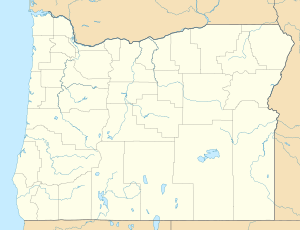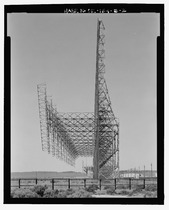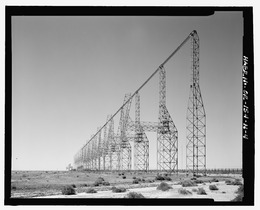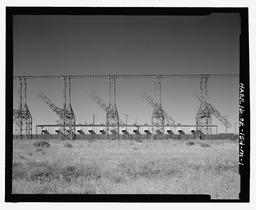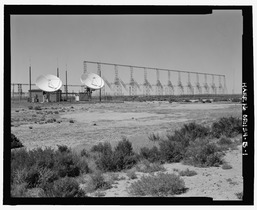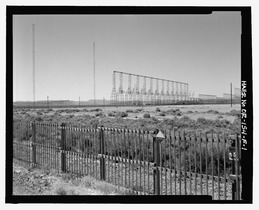Christmas Valley Air Force Station facts for kids
Quick facts for kids Christmas Valley Air Force Station
|
|
|---|---|
| Part of Electronic Systems Division Air Force Materiel Command (AFMC) |
|
|
Location of Christmas Valley AFS, Oregon
|
|
| Coordinates | 43°16′45″N 120°22′45″W / 43.27917°N 120.37917°W |
| Type | Air Force Station |
| Site information | |
| Controlled by | |
| Condition | Cold storage/deactivated |
| Site history | |
| Built | 1980s |
| Built by | GE Aerospace |
| In use | 1985-1997 |
| Materials | AN/FPS-118 Rx over-the-horizon backscatter radar array |
| Garrison information | |
| Garrison | 777 Radar Squadron |
Christmas Valley Air Force Station was a special radar base. It belonged to the United States Air Force. This station was used to detect objects very far away. It was located about 16 miles east of the town of Christmas Valley, Oregon. The station was closed in 1997.
Contents
The Story of Christmas Valley Air Force Station
How the Radar System Worked
Engineers from the USAF Rome Air Development Center started working on a new radar system in the 1970s. This system was called "over-the-horizon backscatter radar" (OTH-B). It could find things far beyond what normal radar could see.
How did it work? Radar signals were bounced off the ionosphere. The ionosphere is a layer high up in Earth's atmosphere. This bouncing helped the radar signals go over the curve of the Earth. This way, the radar could detect objects that were very far away.
Building the West Coast System
A small test radar was set up in Maine in the early 1980s. This test was successful. Because of this, the Air Force decided to build bigger OTH-B systems. They planned systems for the east coast, west coast, and Alaska.
The west coast OTH-B system was built by GE Aerospace. It used a special radar called the AN/FPS-118. This system had two main parts. The transmitter was at Christmas Valley AFS. The receiver was at a new base called Tule Lake AFS in California.
Soldiers from the 777th Radar Squadron worked at both stations. All the information gathered by the radar was sent to Mountain Home AFB in Idaho for processing.
Why the Station Closed
The Cold War ended, and the Soviet Union broke apart. This meant the OTH-B systems were not as needed for finding enemy aircraft. However, the radar kept working until 1997.
Its data was still useful for other things. The National Oceanic and Atmospheric Administration (NOAA) used the information. NOAA studies the oceans and atmosphere.
In 1997, the station was put into "warm storage." This means it was kept ready to be used again if needed. By 2002, it was fully "deactivated" and put into "cold storage." All the equipment was removed from the site.
Gallery



